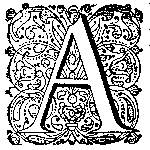Partakers with the Altar
Church Personnel and the Exploitation of Amsterdam's Public Churches, 1650-1795
DOI:
https://doi.org/10.51750/emlc9616Keywords:
sextons, church personnel, minor clergy, public finances, civil religion, AmsterdamAbstract
Contrary to prevalent assumptions, city magistracies did not simply pay for the upkeep of the churches used by the Dutch Reformed church. Based on the archives of churchwardens for the eleven public churches of Amsterdam, this article shows that for about a century between 1650 and 1750 the churches paid for themselves, how this was possible, and why they eventually came to rely municipal subsidies. After the devastations wrought by Revolt and Reformation, the buildings were refurnished in a luxurious style, befitting the prestige of the city. Burgomasters imposed a seating arrangement that, maintained by a variety of church attendants, reflected the hierarchical order of society. The biographical background and the work of these attendants provide a window into the ritual of churchgoing. During the heyday of Amsterdam’s prosperity people were happy to pay or the services the churches provided, including the display of rank and dignity. Economic decline, critique of the established social order, and changing religious sensibilities undercut this source of funding. The report of an auditing committee, analysing the administration of churchwardens in 1795 and 1796, testifies to the difficulties even the staunchest Batavian revolutionaries experienced when rethinking early modern public finances.
Downloads

Published
Issue
Section
License
Copyright (c) 2021 Joke Spaans

This work is licensed under a Creative Commons Attribution-NonCommercial 4.0 International License.





